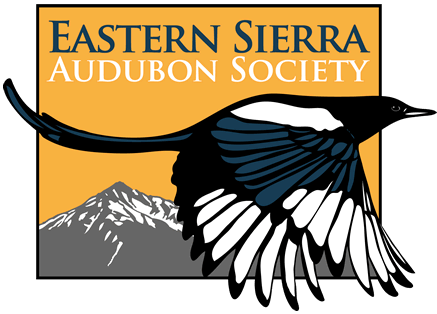Someday, if you are lucky, you will see a bird marked with leg bands, wing tags, spray colored or neck-collared. All of these birds are especially important as they can be identitied right down to a specific individual. Somebody held that bird, marked it, took measurements, recorded everything, maybe photographed it and released it to continue on its travels. The information gathered is sent to the U.S. Fish and Wildilfe Service’s Bird Banding Laboratory in Laurel, Maryland. The data are computerized and printouts are available to agencies, universities, and independent researchers for various studies.
Banding is the most common way of marking birds, and, in fact, all birds with other markings are also banded. Special traps or mist nets are placed in areas of bird activity. As birds move about they may go after food in a trap or fly into the almost impossible-to-see net. They are carefully removed and placed in a holding bag and returned to the banding station. There a uniquely numbered aluminum band is placed on the bird’s leg with special pliers that insure a round fit that is free to rotate and move up and down on the leg. Measurements are taken of wing and tail length, weight, molt sequence, fat, and sometimes additional measurements of the length and width of the bill, length of the hind toe, etc. The bird is aged and sexed when possible. Sometimes the plumage helps age the bird. For instance, White-crowned Sparrows with brown and buff head stripes were born this spring. Black and white head stripes are on adults that were born last year or earlier. Othertimes it shows the sex as in Lesser Goldfinches where the male wears a black beret and the female doesn’t. But beware, right now the young boys (born this year) have just a few, hard-to-see black feathers.
Banding birds is difficult and demanding both on the bird and on the bander. So why do it? Because it is the only way to answer many important questions that relate to the biology of the birds and the health of our environment. Do birds return to the same place in winter or in summer or to nest? Do birds follow the same migratory paths in spring as they do in fall, or from year to year? When they migrate do they reach the same area at the same time of year, year after year. How long do birds live? Where do the neotropical migrants spend most of their year? When does each species leave the wintering grounds? How many miles do they travel in a day? week? month? What is the molt sequence for each species and how can that be used to age birds? What is the status of the populations of birds? Are they increasing, declining, or remaining stable? How many different species and in what numbers use a specific habitat? Enough of the questions. Now for some of the answers.
A Red-tailed Hawk was captured 12 Nov 1994 in New Jersey. The band number was sent to the Bird Banding Lab and the return data showed that this bird was banded 21 Oct 1972 as an adult. It was at least 23 years old! House Finch populations showed a gradual increase, peaking sharply in the mid-1980s and have experienced a rapid decline since. The first record of an Allen’s Hummingbird east of Louisiana was of a bird that flew into a mist net in Massachuseffs. A banded Tree Swallow successfully raised a second brood after failure of the first. A female Great Horned Owl was found 28 years 7 months after being banded. How many mousers did she raise in that time? A Common Grackle killed and ate 39 small passerines from 11 May – 1 June 1992. Sad was an overall decline between 1973 and 1988 of winter resident warblers in a Puerto Rican dry forest while the resident species showed only normal fluctuations. Almost 15,000 Swainson’s Hawks were banded in North America between 1923 and 1992. Of the 81 returns of birds banded prior to 1955, 60 died from gunshot. Of the 421 returns of birds banded after 1955, 60 died from gunshot. Let’s call this progress.
Thousands of banders rely on the general public for voluntarily reporting any marked birds. If you see a tagged, sprayed or collared bird(s) please write a letter to the USF&W, Washington, D.C. and give all the details of the sighting such as when and where (be as specific as possible), numbers and colors, how many, behavior, etc. If you find a dead bird remove the band and send it taped to a piece of stiff cardboard to the above address including the same information. If you don’t want to remove the band you can try to read the number (9 small digits) and copy it carefully (or call us). A one digit error ruins all your effort as the wrong information will be returned to you and passed on to the bander. You will receive a certificate of appreciation with information on what the species was, where and when the bird was banded, the age and sex if determined and any other pertinent information. Over one million birds are marked in the U.S. and Canada every year. Hopefully you will be one of the lucky ones to find one and add another piece to the scientific puzzle.
Tags: crow, finch, hawk, hummingbird, owl, sparrow, warbler
